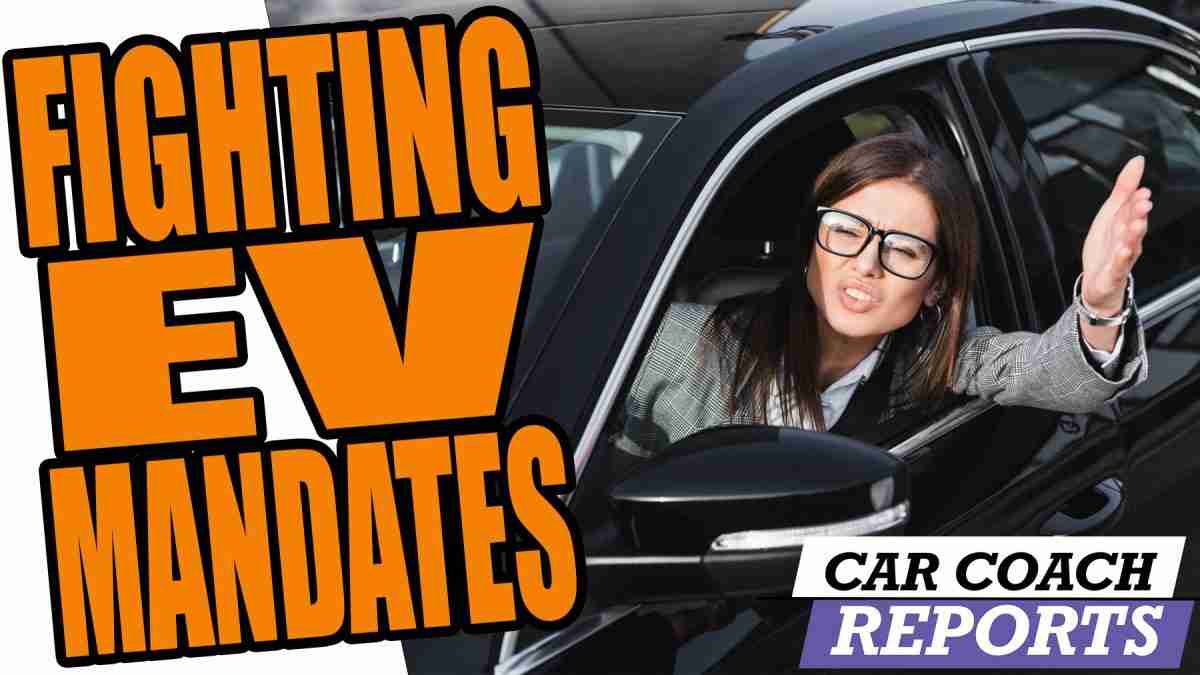Auto Dealers Reiterate Concerns Over Electric Vehicle Regulations

Table of Contents
Increased Investment Costs and Infrastructure Challenges
The shift to EVs presents significant financial hurdles for auto dealers. Implementing the necessary infrastructure to support EV sales requires substantial upfront investment and ongoing maintenance. Key challenges related to EV infrastructure and dealer investment include:
-
Significant upfront investment required for EV charging infrastructure at dealerships: Installing Level 2 and DC fast chargers demands considerable capital expenditure, especially for larger dealerships needing to accommodate a diverse range of EVs and charging speeds. This investment is often not immediately recouped through increased EV sales, creating a financial strain on dealerships.
-
Lack of government support for infrastructure development and modernization: While some government incentives exist for charging station installation, they are often insufficient to cover the total cost, leaving dealers to shoulder a significant portion of the expense. Streamlined permitting processes and increased financial aid are crucial to alleviate this burden.
-
High cost of EV inventory compared to traditional vehicles: EVs, with their complex battery systems and advanced technologies, typically have higher upfront costs than comparable gasoline-powered vehicles. This leads to increased inventory holding costs and a higher risk of losses if sales don't meet projections.
-
Training requirements for staff to service and sell EVs: Dealers need to invest in specialized training for their sales and service teams to effectively handle the unique aspects of EVs, including battery maintenance, charging systems, and software updates. This represents an additional cost and requires dedicated time and resources.
-
Uncertainty about future EV demand and return on investment: The fluctuating market demand for EVs, influenced by factors like battery technology advancements, government policies, and consumer sentiment, makes it challenging for dealers to accurately predict future demand and justify the significant investment in EV infrastructure and training.
Impact on Sales and Profit Margins
The transition to EVs is also impacting the profitability of auto dealerships. Several factors are contributing to reduced sales and profit margins:
-
Reduced profit margins on EV sales compared to gasoline-powered vehicles: The current pricing structures for EVs often result in lower profit margins for dealers compared to traditional vehicles, squeezing their already tight profit margins.
-
Increased competition from direct-to-consumer EV manufacturers: The emergence of direct-to-consumer EV models, bypassing traditional dealerships, introduces a new level of competition, further impacting sales and profitability for established dealerships.
-
Difficulty in managing EV inventory effectively due to supply chain issues: Supply chain disruptions impacting the availability of EV components and batteries make it difficult for dealers to maintain optimal inventory levels, potentially leading to lost sales and increased storage costs.
-
Customer concerns about range anxiety and charging infrastructure impacting sales: Consumer concerns about the driving range of EVs and the availability of charging infrastructure remain a significant barrier to EV adoption, hindering sales growth for dealers.
-
Need for aggressive pricing strategies to compete effectively: To remain competitive in the evolving EV market, dealerships often need to adopt aggressive pricing strategies, which can negatively impact profit margins.
The Role of Government Incentives and Subsidies
Government incentives, such as EV subsidies, tax credits, and consumer rebates, play a vital role in promoting EV adoption. However, their effectiveness is often limited:
-
While government incentives exist, they are often insufficient to offset the higher costs of EVs for both dealers and consumers. The current levels of support need to be reassessed and potentially increased.
-
The complexity of incentive programs makes them difficult for consumers to understand and utilize. Simpler, more transparent programs are needed to maximize their impact.
-
The effectiveness of current incentive structures needs to be reassessed and potentially improved. A more targeted approach may be necessary to address specific market segments and overcome barriers to adoption.
Concerns Regarding the Speed of EV Transition
The rapid pace of mandated EV adoption raises concerns about market readiness and potential disruptions:
-
The rapid pace of mandated EV adoption may outstrip market demand and consumer readiness. A more gradual transition would allow for smoother market adjustments and minimize disruptions.
-
Concerns about the impact on the used car market and the potential for stranded assets. Policies should consider the implications for the used EV market and minimize the risk of devaluation for existing gasoline vehicles.
-
The need for a more phased approach to EV adoption to allow for smoother market adjustments. This approach allows dealers, manufacturers, and consumers to adapt gradually to the changing market dynamics.
-
Advocacy for a collaborative approach between regulators and the automotive industry. Open dialogue and collaboration are crucial to ensure that regulations support, rather than hinder, the successful transition to EVs.
The Importance of Consumer Education and Support
Effective consumer education is crucial for driving EV adoption. Addressing misconceptions and concerns about EVs is key to accelerating the transition:
-
The need for effective consumer education campaigns to address misconceptions about EVs. These campaigns should highlight the benefits of EVs, address range anxiety, and dispel myths about charging infrastructure.
-
Addressing consumer concerns about range anxiety and charging infrastructure. Improved access to charging stations and educational initiatives addressing range anxiety are crucial.
-
Highlighting the environmental and economic benefits of EVs. Clear communication about the environmental and economic advantages of EVs can encourage adoption.
-
Collaboration between dealers, manufacturers, and the government on consumer awareness initiatives. A concerted effort by all stakeholders is necessary to effectively educate consumers.
Conclusion
The concerns voiced by auto dealers regarding electric vehicle regulations are significant and should not be ignored. Addressing the challenges related to infrastructure investment, profitability, consumer education, and the speed of the transition is crucial for the successful adoption of electric vehicles. A collaborative effort between government agencies, auto manufacturers, and dealerships is vital to develop effective policies that support both the environment and the long-term viability of the automotive industry. Ignoring these concerns surrounding electric vehicle regulations could ultimately hinder the progress towards a sustainable transportation future. Let's work together to find solutions that address these issues and facilitate a smooth transition to a cleaner, more efficient automotive sector. We need a balanced approach to EV regulations that considers the needs of all stakeholders.

Featured Posts
-
 R Sociedad Sevilla En Vivo Sigue El Partido De La Liga Aqui
May 14, 2025
R Sociedad Sevilla En Vivo Sigue El Partido De La Liga Aqui
May 14, 2025 -
 Prognoz Damiano David Na Yevrobachenni
May 14, 2025
Prognoz Damiano David Na Yevrobachenni
May 14, 2025 -
 Spor Mezi Ct A Medii Vylouceni Novinaru Deniku N A Seznam Zprav
May 14, 2025
Spor Mezi Ct A Medii Vylouceni Novinaru Deniku N A Seznam Zprav
May 14, 2025 -
 Fin De Mandat Pour Alexis Kohler A L Elysee Son Arrivee A La Societe Generale Analysee
May 14, 2025
Fin De Mandat Pour Alexis Kohler A L Elysee Son Arrivee A La Societe Generale Analysee
May 14, 2025 -
 Is Disneys Snow White Remake The Worst Film Ever An Im Db Ranking Analysis
May 14, 2025
Is Disneys Snow White Remake The Worst Film Ever An Im Db Ranking Analysis
May 14, 2025
